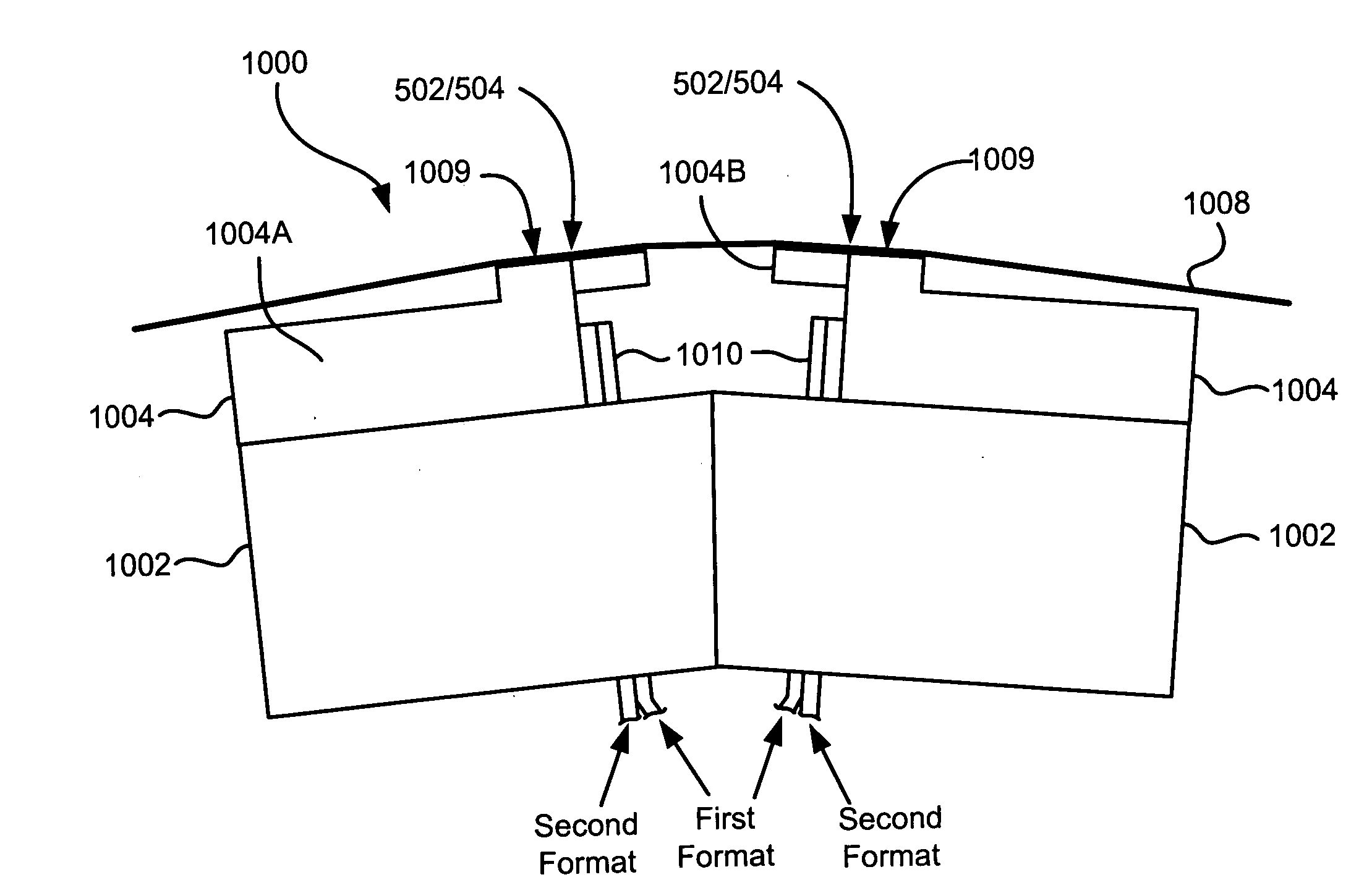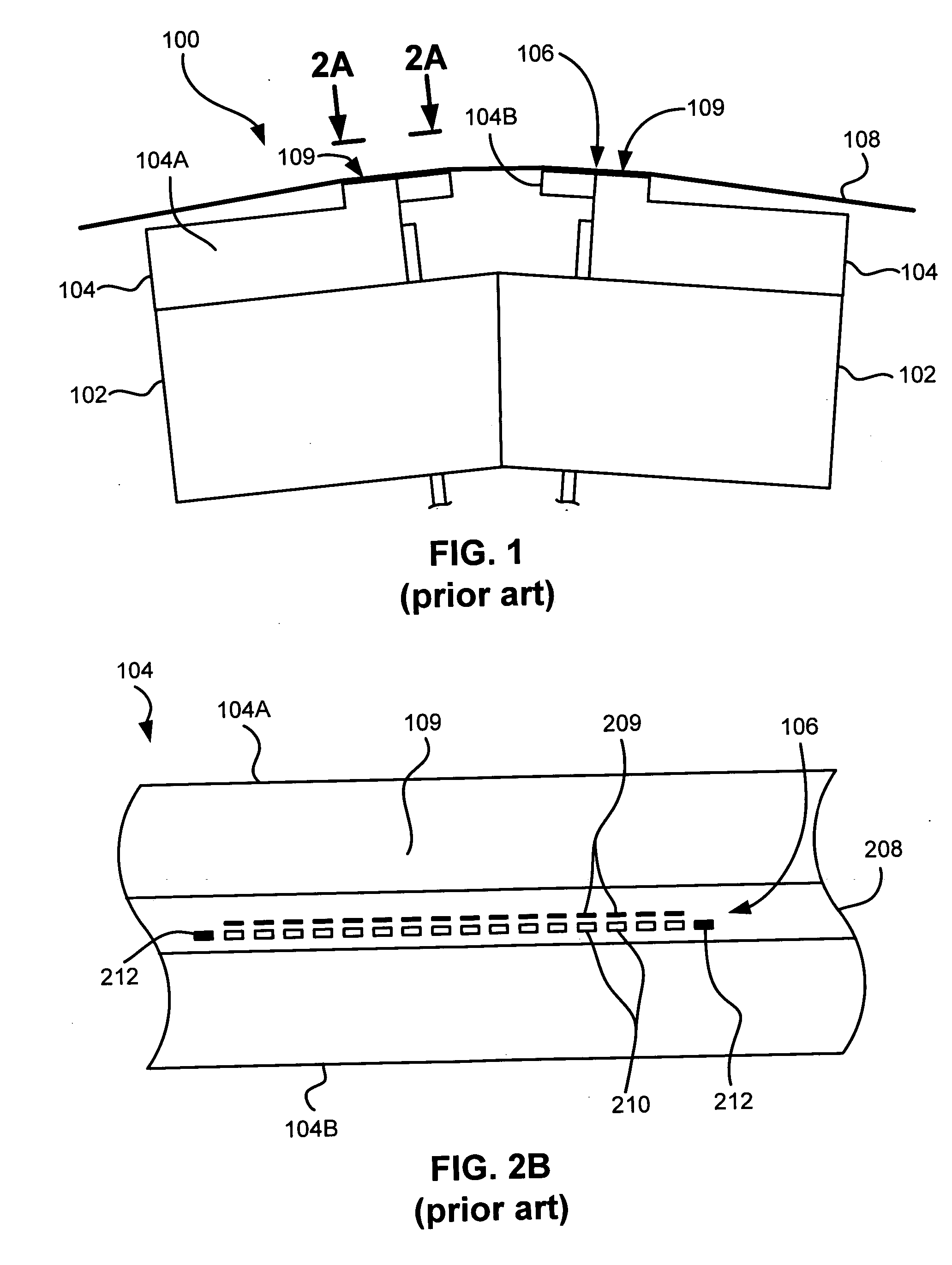Multi-format magnetic head
a multi-format, magnetic head technology, applied in the direction of heads, recording information storage, instruments, etc., can solve the problems of head design that cannot work with a tape written in another format, high production cost of head types, and more susceptible to errors
- Summary
- Abstract
- Description
- Claims
- Application Information
AI Technical Summary
Problems solved by technology
Method used
Image
Examples
Embodiment Construction
[0038] The following description is the best mode presently contemplated for carrying out the present invention. This description is made for the purpose of illustrating the general principles of the present invention and is not meant to limit the inventive concepts claimed herein. Further, particular features described herein can be used in combination with other described features in each of the various possible combinations and permutations.
[0039] In the drawings, like and equivalent elements are numbered the same throughout the various figures.
[0040] The embodiments described below disclose a new head design that is capable of reading and / or writing to magnetic media such as magnetic tape in multiple formats. For example, the head can write and / or read data in both legacy and advanced formats, and in doing so can enable full backward compatibility with legacy media types. This is an important criterion for customers wishing to move to a new format yet having data stored on med...
PUM
| Property | Measurement | Unit |
|---|---|---|
| element size | aaaaa | aaaaa |
| volumes | aaaaa | aaaaa |
| magnetic | aaaaa | aaaaa |
Abstract
Description
Claims
Application Information
 Login to View More
Login to View More - R&D
- Intellectual Property
- Life Sciences
- Materials
- Tech Scout
- Unparalleled Data Quality
- Higher Quality Content
- 60% Fewer Hallucinations
Browse by: Latest US Patents, China's latest patents, Technical Efficacy Thesaurus, Application Domain, Technology Topic, Popular Technical Reports.
© 2025 PatSnap. All rights reserved.Legal|Privacy policy|Modern Slavery Act Transparency Statement|Sitemap|About US| Contact US: help@patsnap.com



